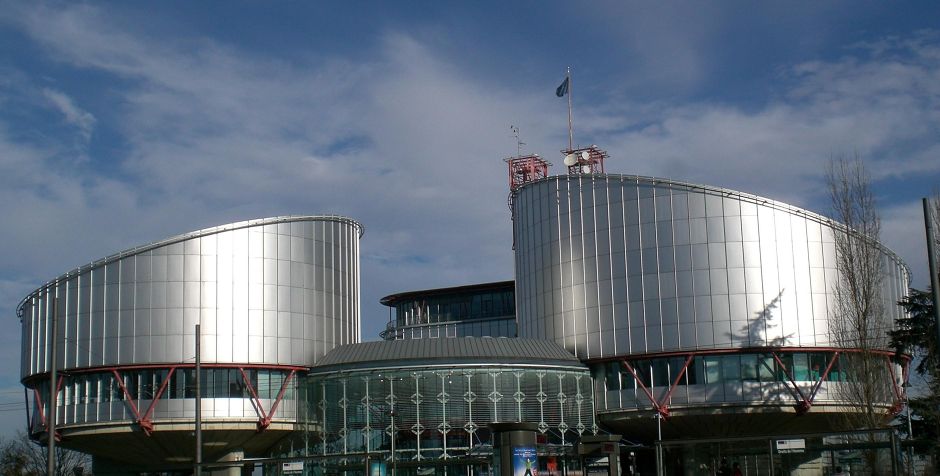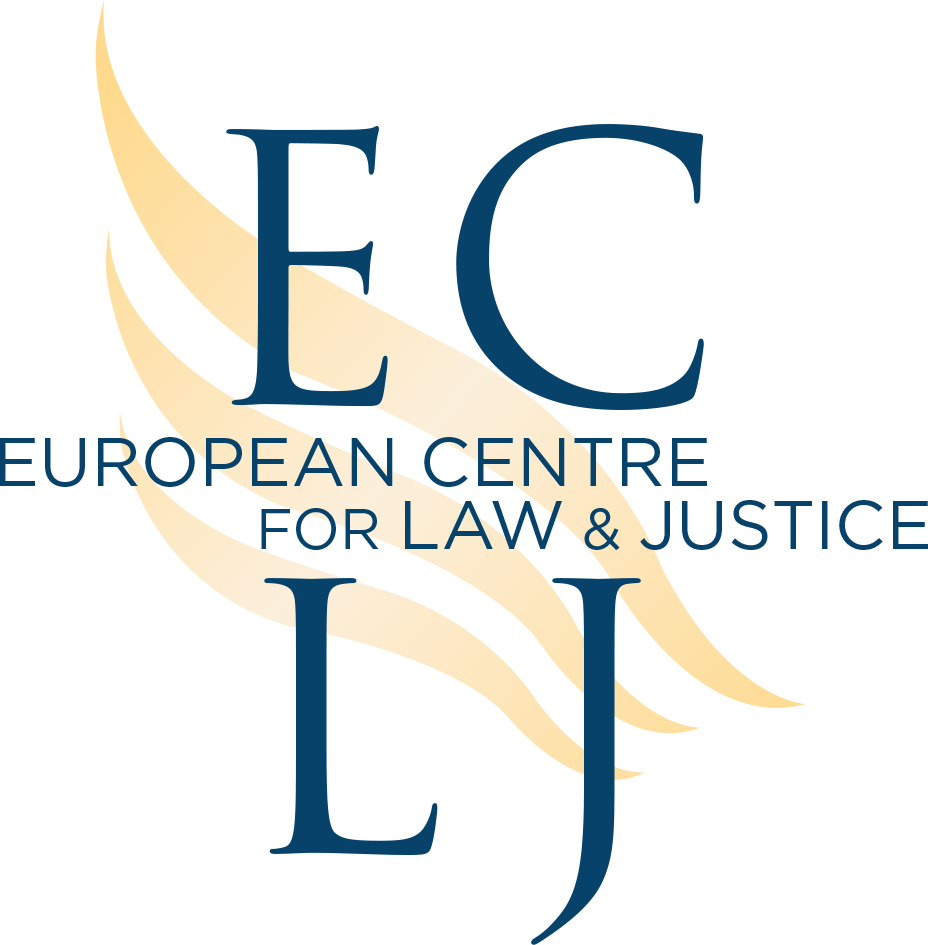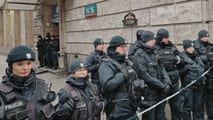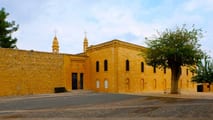

Spain condemned for judging that property rights of a Catholic parish church belong to the diocese
Catholic parish church & property
Andreea Popsecu, 19 November 2014
On November 4th 2014, the Third Section of the European Court of Human Rights (“the Court” or “the ECHR” hereafter) concluded, unanimously to a violation of Article 6 of the Convention (the right to a fair trial) and by 6 votes to one to a violation of Article 1 of Protocol no. 1 to the Convention (protection of property) in the case of Sociedad Anonima del Ucieza v. Spain (no. 38963/08) related to the ownership of a parish church of the Diocese of Palencia. The Court considered that the applicant company “was a victim of the exercise of the right to register recognized by the internal law to the Catholic Church, without an apparent justification and in the absence of a contestation of the Diocese of Palencia, within the time limits established by the law, of its right of property, at the time of its registration of the possession in the Land Registry” (§ 101).
This judgment challenges the possibility of the Catholic Church to register in the Land Registry its immovable possessions that it has since immemorial times on a simple certificate delivered by the Diocese.
The ECLJ hopes that the present case will be referred to the Grand Chamber, as the reasons put forward by the Third Section of the ECHR, in order to find a violation of Article 1 of Protocol 1 to the Convention, not only have no basis in Spanish national law, but they are also built on the idea that the owner of a church, which is the location of a parish for a few centuries, would not be the Diocese of Palencia, but a commercial company, which in 1978 acquired the land on which the church is situated, but on which the Land Registry indicates that a church is “enclaved”.
* * *
The case concerns a land acquired by the applicant company on July 12th 1978 and registered into the Land Registry in 1979. The Land Registry stated that “a church, a house, norias, a farmyard and a mill” were “enclaved” in the land. This land and this church belonged to the ancient Cistercian monastery of Santa Cruz de la Zarza, of the Order of the Regular Canons of Premontre, which was part of the priory of Santa Cruz, founded in the 12th century. After the suppression of the Order of Premontre at the beginning of the 19th century, by the laws of desamortización of October 11th 1835, February 19th 1836 and September 2nd 1841 (laws confiscating ecclesiastical property), the property of the priory of Santa Cruz was sold to auction in 1835 and 1841. These possessions were successively transferred and registered into the Land Registry up until that of the applicant company.
However, by virtue of Article 6 § 4 of the law of desamortización, the cathedral or parish churches and their annexes and branches were excluded from confiscation. Therefore, on the 22nd of December 1994, the Diocese of Palencia registered, on its name, into the Land Registry, an urban land with a 13th century Cistercian style church, a sacristy and a chapter house, which had formerly belonged to the ancient monastery. This registration in the Land Registry was made on the basis of a certificate dated December 16th 1994, delivered by the Diocese itself under the signature of its secretary general, with the approval of the general vicar, in virtue of Article 206 of the law on the publication of property transactions (mortgage law) of February 8th 1946. This article allows entities of the Catholic Church (and of the State), in the absence of the written title of the property, to register as their property the possessions belonging to them on presentation of a certificate delivered by the public servant in charge of their administration. The certificate will mention the title and the manner of acquisition of the property. This possibility exists for the Catholic Church (and for the State) due the difficulty in identifying the origin of massive assets possessed since immemorial times and for which there are no written titles attesting the owner. The purpose was to remove the obstacle which could have resulted from the lack of titles for this type of possessions. Therefore, this certificate does not constitute a title of property or a manner of acquiring property, but merely a title of registration, the property was pre-existent, even though there is no document to prove it. Thus, according to Spanish law, the registration on the Land Registry is declarative and not constitutive of property.
Considering itself unjustly deprived of a part of its possessions, the applicant brought a civil suit against the Diocese of Palencia to nullify the registration of the church into the Land Registry. At first instance and on appeal, the tribunals concluded that the applicant had never been able to acquire from the sellers that which those could not transfer, as the property of the church belonged to the Diocese of Palencia and that for three reasons. Firstly, because the church, which had been a parish church before the laws of desamortización, was not affected by either these laws or the successive sales, as it had continued to host mass and other Catholic worship activities at least from1617. After 1841 and until the present moment, it continued to exist as a parish church, it was served by successive priests and it was the subject of numerous restorations on the demand of the priests and at the expense of the Diocese. Secondly, according to canon law, the applicant could not have had acquired the ownership of the church by adverse possession (or “acquisitive prescription” which designs the manner in which the immovable possessions are acquired in property by a peaceful and public possession from 10 to 30 years, according to the case), as such possession could only benefit to moral ecclesiastical persons. Thirdly, the church in question could not be found itself in the possession of the applicant during the time required by the law for the adverse possession, bearing in mind the fact that the diocese had acted as the owner until the conflict over the registration of the title of property. The mere detention by the employees of the applicant of the keys of the church, in order to open it for visits during certain times of the year where, given the low number of faithful in the area, there were no regular worship activities, was not constitutive of propriety.
The second appeal of the applicant was declared inadmissible on the grounds that the applicant did not manage to show that the new threshold for bringing a second appeal under financial criteria had been reached. The applicant only stated that the property was “invaluable”, admitting in the same time that the financial value of the dispute was superior to the financial threshold required.
Unsatisfied with the rejection of its action by internal tribunals, the applicant turned to the ECHR alleging a violation of Articles 6 of the Convention (right to a fair trial – by reason of the rejection of its second appeal) and 1 of Protocol no. 1 to the Convention (right to the protection of property – by reason of the registration on the Land Registry of the title of property of the church under the name of the Diocese). The applicant considered that its right to fair trial had been violated, bearing in mind the fact that its second appeal was declared inadmissible, despite the fact that it had demonstrated that the value of the church exceeded the financial threshold establish by law in order to be able to introduce a second appeal. What is more, it considered that it was deprived of a part of its property, comprising a medieval church, without reason of public use and in the absence of compensation, on the basis of a pre-constitutional law.
Analysing the complaint under Article 6 of the Convention, the Court concluded that there had been a violation of the Convention. It judged that the extremely rigorous interpretation of a procedural rule had prevented the applicant from having its case examined on the merits in the second appeal. The Court acknowledged that it cannot be reproached to the applicant that it considered the value of the church as “invaluable”, as no market value could have been establish, despite the intervention of an expert, and given the characteristics of the possession in question.
Normally, given the finding of a violation of Article 6 of the Convention, the assessment of the Court should had stopped here, as Judge Motoc noted in her partially dissenting opinion. This approach was desirable, as the Highest Court of Spain did not have the possibility to judge the case on the merits and to adopt a final judgment on the matter, as the second appeal of the applicant was declared inadmissible. However, the Third Section of the Court continued to assess the complaint relative to the respect of the right to property invoked by the applicant company, even if it was not definitively judged by the internal tribunals.
Analysing the complaint under Article 1 of Protocol 1 to the Convention, the Court concluded that there had been a violation of the Convention. In order to arrive to this conclusion, the Court examined the procedure of registration undertaken by the Diocese and the civil procedure in annulling this registration. It also noted the absence of compensation of the applicant following the deprivation of its possession and the absence of access to a tribunal acknowledged under Article 6 of the Convention.
It should be noted that what allowed the Court to conclude to this violation is the assessment of the case (so much of the procedure of registration of the Catholic Church as of the action of annulling this registration) strictly from the point of view of the law on land registration of February 8th 1946, ignoring completely the effects of the laws of desamortización of September 2nd 1841, of the canon law and of the material Spanish civil law, as the issue of the case is the registration of a property right of an ecclesiastical possession that was never confiscated by the authorities and which is still the property of the Church. What is more, in violation of the principle of subsidiarity, the Court has arbitrarily disregarded the establishment of the facts and the interpretation of the law made by the internal tribunals, by substituting itself to internal tribunals and considering itself a fourth instance.
Concerning the registration procedure in the name of the Diocese, it is to be noted that according to the law on land registration, no other title can be opposed to a title already registered into the Land Registry. The property rights registered in the Land Registry are presumed to exist and belong to their holder. The registration of existing properties, but which are not yet registered into the Land Registry can be operated in the case of the Catholic Church on the basis of a certificate delivered by the bishop of the diocese. If the delivered certificates contradict an existing registration, the supervisor of the Land Registry will postpone the requested registration and will send a copy of the contradicting certificates to the authority that delivered them. Thus, the Court noted that the supervisor of the Land Registry entered the property right of the Catholic Church over the church even though, as acknowledged by the tribunals, a registration of the property right over the church already existed. This fact, the Court followed, had detrimental effects for the applicant company, without it could formulate objections based on its 1979 registration at the time of this new entry.
It is true that the supervisor of the Land Registry could have postponed the new registration until clarification of the legal situation. Nevertheless, as in the present case the issue is a parish church which continued to host mass and other Catholic worship activities at least from 1617, there was no doubt that the Diocese of Palencia was actually the owner. The estate of the Catholic Church allocated to the worship is detained by it from immemorial times, even before the existence of the Land Registry. In any case, the applicant commercial company already challenged this registration into internal courts.
Addressing the issue of the civil procedure in annulling the entry of title of the Catholic Church, the Court found numerous discrepancies. First, it considered that the internal tribunals rejected the applicant company’s action for “historical reasons” (§ 93). Or, in the present case, the tribunals applied the laws of desamortización which excluded from confiscation the cathedrals and parish churches and their annexes. It also reproached the tribunals for having analysed the action from the point of view of “historical considerations” (§§ 94 and 97) (the laws of desamortización) and of the civil law institutions, such as adverse possession and possession, ignoring the law on land registration, notably the question of the legality of the registration under the name of the Diocese of Palencia.
Thus, the Court concluded that the article of the land registration law allowing the Catholic Church to register it’s property in the Land Registry on the simple grounds of a certificate issued by the Diocese does not satisfy the requirements of clarity and foreseeability required by the Convention, because it permitted a registration in the name of the Catholic Church which “intervened in an arbitrary and hardly foreseeable manner and did not grant the applicant the elementary procedural guarantees for the defence of its interests.”(§ 95)
Consequently, the Court, ignoring the fact that the internal tribunals (after adversarial proceedings and respecting the requirements of Article 6 of the Convention) established that the church had never left the estate of the Catholic Church and considering erroneously that by the registration of the Catholic Church the applicant company was deprived of its property, instituted the obligation for the State to organise an adversarial proceedings on the existence of the property right on possessions when this right is to be registered in the Land Registry: “the registration of possessions already mentioned in a previous registration could not be considered legitimate in the absence of an adversarial proceeding, respectful of the principle of equality of arms. Such a proceeding, at the same stage of registration, would have allowed the assessment on an equal footing of the question of the origin of ownership and the validity of the successive transactions” (§ 97).
Then, denouncing the outcome of the procedure, the Court reproached the tribunals for having interpreted the national law in the light of the laws of desamortización and of the institutions of adverse possession and possession, which it considered as “general historical considerations”, even though these laws are part of Spanish judicial order : “the jurisdictions assessing the merits of the case interpreted the national law as authorising the Diocese of Palencia to use its right to registration on the basis of general historical considerations” (§ 97). Or, according to the Spanish law, the registration on the Land Registry is declarative and not constitutive of the right to property. The registration carried out by the Diocese was not constitutive of its right to property on the church, as this property already existed to the registration. The registration could not be considered as the source of the property right of the Diocese. Its sole effect was to create a simple presumption, of possessory order, which aims to guarantee the security of transactions. What is more, the internal tribunals correctly considered that the ownership belonged to the Diocese and that not because of the 1994 registration, but because they took into consideration the laws of desamortización and the Spanish material civil law.
After that, the Court tackled the fact that the national law conferred to the certificate presented by the Diocese the same value as to the certificate presented by any other civil servant and the fact that the State does not confer the same privilege to other denominations: “The Court considers nothing less than surprising that a certificate submitted by the secretary general of the Diocese can have the same value as certificates submitted by civil servants invested with prerogatives of public power, and asks itself moreover why Article 206 of Spanish mortgage law relates only to bishops of the Catholic Church, to the exclusion of representatives of other denominations” (§ 99). Advancing such an affirmation is ignoring the reality in Spain where Catholic Church was a State religion until 1978 and where the 1841 laws of disentitlement concerned the possessions of the Catholic Church and not of the other denominations. What is the relevance of such an argument for the present case? It is clear that this argument does not bring anything to the reasoning of the Court. It is rather a political position statement which witnesses a prejudice on the Catholic Church.
Finally, the Court noted the absence of a time limit on the registration of a property of the Catholic Church which, according to the Court, could contravene the principle of legal certainty: “The Court also notes that there was no limitation on the time of such a registration and that is could be operated, as in the present case, in an untimely manner, without previous publicity conditions and in breach of the principle of the principle of legal certainty” (§ 99 in fine).
Concerning the absence of compensation of the applicant company following the action of annulment, the Court considered that it was possible because the internal tribunals judged that the church had always belonged to the Diocese of Palencia, as it has always been a parish church. Nevertheless, the applicant company still has the possibility to introduce warranty proceedings against the seller in order to recover its damage.
For that which is relative to the applicant company lack of access to a tribunal, as it was deprived of its right to access to a second appeal, violation acknowledge by the Court under Article 6 of the Convention, it is to be noted that one cannot invoke it as a reason in order to conclude to a violation of Article 1 of Protocol no. 1 to the Convention. This conclusion of violation of Article 6 of the Convention proves that the internal tribunals did not have the chance to deliver a final judgment on the merits of the case. As long as there was no such a final judgment on the merits, the Court cannot censor the internal decisions which are not final.
The ECLJ considers that if the founding of a violation of Article 6 of the Convention does not raise in itself serious issues, the situation is different in the case of the founding of a violation of Article 1 of Protocol no. 1 to the Convention. This acknowledgment raises a real issue as, on one hand, the judges of the Third Section of the Court authorized themselves to rule on this article ordering to the Highest Court of Spain what it should have decided. On the other hand, not only they adopted on this point a hostile position regarding the Spanish law in this field, but they called into question the legal certainty of the estate of the Catholic Church. Beyond that, the issue at stake is especially the ability of the registration of the Catholic Church upon a declaration to the Land Registry.













